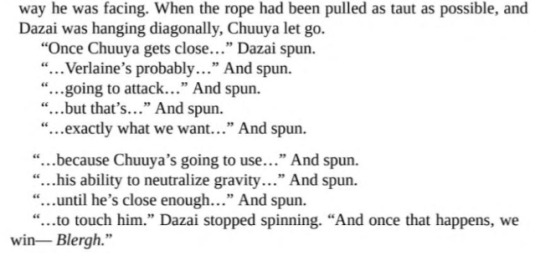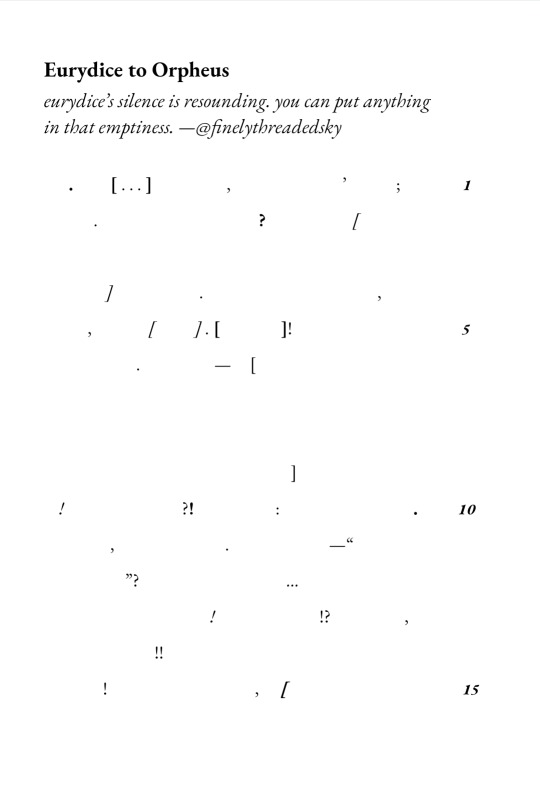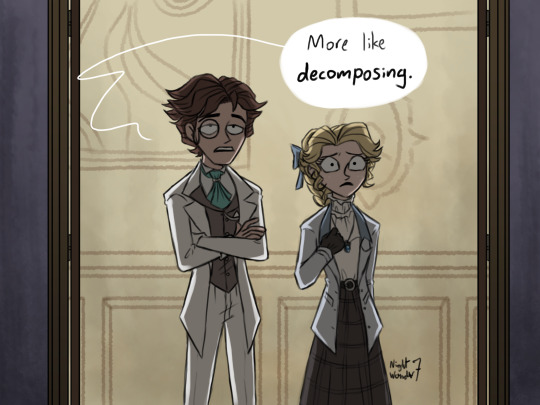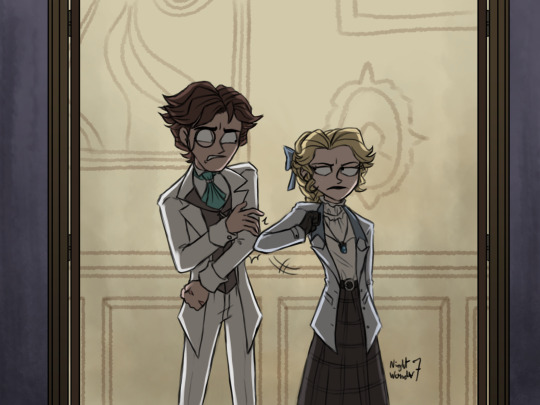#composable
Explore tagged Tumblr posts
Text
Composable Architectures For Building Flexible IT Systems

Describe composeable architectures
Composable IT architecture uses modular, reusable, and easy-to-build and alter components. Built for ongoing evolution, this system can adapt to market upheavals and rapidly changing corporate needs.
Composable architectures enable enterprises to reassemble business functions like building bricks, offering unprecedented flexibility and reusability.
Three personalities emerge from composable architecture:
Developers and IT professionals use iPaaS development studios to build and show events, microservices, and APIs.
Curators: Architects and IT experts define, regulate, and maintain reusable asset catalogues. They may ensure API, event, and microservice discoverability, security, and compliance via an iPaaS catalogue or marketplace.
Composers: Domain specialists, business analysts, line-of-business experts, and data scientists understand their domains' needs and methods. They use simple, low-code or no-code technologies to add business functionalities to iPaaS apps.
Composability takes planning. Even as technology changes, SOA principles remain relevant. These include abstraction, loose coupling, and standard contracts. They also ensure that decomposable architectural software can coexist without fragile dependencies.
Modern IT agility: Composable assets, catalogues, and composition
Modern hybrid iPaaS allows organisations to construct a composable architecture with three components:
Developers and IT professionals using the iPaaS development studio create and manage reusable building parts (APIs, events, and microservices). They emphasise design.
Composable catalogue: An accessible, well-managed asset catalogue or marketplace is needed. Curators and architects manage decomposable component lifespans, enforce governance norms, and ensure discoverability using the iPaaS catalogue. This method seeks governance and discovery.
Composition: Magic happens here. Business technologists may drag and drop prebuilt capabilities into a low-code or no-code palette to develop multi-step business processes and apps using iPaaS workflow orchestration tools. They can coordinate complex workloads without deep API, event, or microservice knowledge.
Naturally event-driven, composeable by design
Event-driven design enables composability. Modern companies often get buy orders, ship merchandise, and register new clients. These events are becoming commercial phrases.
EDA lets firms react fast with instant back-end changes and answers. By managing a high frequency of such occurrences across departments, organisations may improve responsiveness and efficiency.
Modular architecture using APIs, events, and microservices is the way forward. These critical building blocks let business technologists develop, test, and execute new systems and capabilities fast.
Imagine creating a new customer care platform using prebuilt APIs for purchase history, client profiles, and help issues. Composability applies to many industries, therefore this adaptability is not limited to one. Many applications show how versatile this method is.
The development of AI as an intelligent integration architect
AI may transform system integration by serving as an intelligent orchestrator at every stage.
AI must be incorporated into the process, not put on top, to boost business and technical efficiency.
By using AI, companies may prepare for complicated interactions and intelligent automation.
Think about how AI might construct integrations from multiple sources on its own, allowing people with diverse technical skill levels to create, test, deploy, and monitor complex interactions with remarkable ease.
AI agents could manage APIs, find existing interfaces intelligently, generate specifications and code from natural language descriptions to ensure governance policies are followed, and automatically create and run tests to ensure API quality.
Integrating AI holistically and having a single control point for AI services may help organisations prepare for an AI-powered future that turns connectivity into a dynamic and intelligent engine for efficiency and innovation.
Composable architecture benefits
Banking: The competitive financial services business requires fast client onboarding. Composable design allows banks to speed new client onboarding and reduce time-to-value by combining reusable account management services, identity verification APIs, and compliance checks.
Logistics: Logistics specialists strive to carry products faster and cheaper. A modular fulfilling process that lets companies quickly adapt to delays, optimise routes, and improve delivery. The services include order processing, warehouse management, and shipping. This process often involves many interfaces and formats for data exchange.
Healthcare: Hyperindividualized therapy requires thorough patient data. Modular frameworks may combine data from numerous sources, including wearable technologies. This architecture lets healthcare providers create real-time patient monitoring apps and proactively manage health outcomes, improving the digital experience and content management.
The democratisation of application development
Composable architecture lets enterprises build next-generation apps using events, microservices, and trusted APIs in a self-contained service environment. Linking a money processing API, product inventory API, and client authentication API onto a canvas is a simple way to create an e-commerce software.
Business technologists who understand the intended result without diving into the technology may coordinate complexity growth based on business needs. These modular systems can scale to handle increased demands.
Finally, composability protects core governance while democratising application development. This boosts firm efficiency, allowing business users and IT professionals to collaborate on digital capabilities.
The promise is clear: design, implement, and adapt wherever. As firms use an increasingly complex IT stack, composable infrastructure must be flexible and interoperable. Undoubtedly, the imaginative, resilient, and agile firm is in danger.
#Composablearchitectures#decomposablearchitectures#Composableassets#Composablecatalog#Composition#Composable#technology#TechNews#technologynews#news#govindhtech
0 notes
Text
if i woke up in taylor swift's body id tweet out "watching hetalia! it's SOOO funny" and turn my phone off
#i would then quickly compose a song clearly about germany and italy hetalia and drop it#yeah i could do it in a day. ill get chatgpt to do it her fans will not notice the difference
17K notes
·
View notes
Text


obsessed with the idea that Dazai began rolling around on the floor or spinning his chair to help him process his thoughts and come up with plans after Chuuya had tied him up and spun him in Stormbringer
#bungou stray dogs#bungo stray dogs#bsd#bsd dazai#bsd chuuya#soukoku#stormbringer#bsd stormbringer#i was thinking about this on and off today and i literally don't know why#but i love how composed he is in stormbringer just spinning around and around and around while he's talking like nothing's happening#headcanon
1K notes
·
View notes
Text


i imagine the helmet convo went something like this
pt 1
#tenmastrousers#mdzs#skateboarding au#skateboarding au continues!!!#yes wangxian has somehow managed to turn wearing a helmet into a kink thing. its their special talent#lwj far more composed here than in my previous au art LMAO he hasnt found out ab hill bombing yet. hes still living in ignorant bliss#wangxian#wei wuxian#lan wangji#wwx#lwj#comic#mxtx#fanart#mxtx fanart#modao zushi#modaozushi#mo dao zu shi#gdc#the grandmaster of demonic cultivation
1K notes
·
View notes
Text


inspired by this post
#art#off mortis ghost#off the judge#off zacharie#off the batter#the way text is written made me think about Pablo immediately lol#still trying to draw folks#and idk how to draw comics as well it's not very well composed#i wonder if you can tell that i own a cat from the way i draw them
2K notes
·
View notes
Text




#shiguang dailiren#時光代理人#link click#lu guang#cheng xiaoshi#aashi doodles#im suffering rn and want to suffer with others so here's my contribution#lu guang stayed pretty composed on the plane but would that always the case after he wakes up from his cxs is dead nightmares...#lu guang...😔#this was inspired by that one comment in an jnterview where someone asked why lg's bed rails were so high#and i think it was producer who said it was to keep a certain someone from sneaking into his bed but i was like get real#nothing can stop cxs when he wants to do something. and if he wanted to be up there he would go no matter what#anyways lets imagine this as a scene from s1. back when we all had theories that one or both of the boys were trapped in a time loop#we have this scene where lg is having a panic attack and not even cxs is sure why exactly this is happening but plot moves on we h#yeah plot moves on and we shelve this for later and bam. s3 yep lg stuck in a time loop with cxs always dying trauma is confirmed#anyways thats enough from me for now. ima go throw up byeeee
2K notes
·
View notes
Text
Why Dragon Age Veilguard isn't a "Cathedral"

Concept art by Matt Rhodes
"To disinherit the storylines of past games goes directly against the notion of building cathedrals."
What is inherent with Veilguard that keeps bothering me is the fact that the world's choices truly didn't matter--and it doesn't simply bother me from a player perspective, it's not simply a grievance borne of frustration to what I (as a longtime fan) have lost. It's about the very culture of the arts under capitalism's new media habituation cycle [x][x].
Yes, I spent hours of my life playing and replaying each instalment of Dragon Age. Yes, I painstakingly curated a 'canon' world state by replaying what came before in preparation for Veilguard. Yes, I am even more unsatisfied with the end product--time hasn't helped, it's just widened the divide. But, and I can't stress this enough, these very personal gripes aren't what hit home the most. It's the inherent disregard of legacy. A legacy that the previous writers and game developers were building towards.
In the DAV artbook, "cathedral" is the word used to describe the process of making a game. Matt Rhodes' exact words are: "One artist can make a painting, but it takes a team to build a cathedral." Cathedrals took centuries to build. The architect who drafted the first blueprints would likely never see his work realised, he had to rely on those who came after him, like-minded and passionate, to see it through--for the culture, for the future, for legacy. Painters took on several apprentices for this reason too--giant frescoes were not completed by one man's hand, even if it is one man's name that immortalises them. Similarly, if you weave a narrative around choice, what good does it do to take it away at the final act if not to fall to caricature?
To disinherit the storylines of past games goes directly against the notion of building cathedrals.
Late-stage capitalism and profit-margin-obsessed game producers forcing developers to churn out meager content, to make a known brand into something it's not, to chase a fad or a popular trend... o, how reductive and cliche you've been forced to become Bioware. We have lost the cultural thought patterns relative to Cathedrals. We know only of barn-raised churches--done in a day but unlikely to last the turn of the seasons.
And don't even get me started on the music of Veilguard either. From Origins to World of Warcraft to Everquest to Baldur's Gate to Dungeon Siege, you can hear the intricate interconnected weave of sounds inspired by the Dungeons and Dragons-esque fantasy genre. You hear it in the repeated use of certain instruments, in the harmonic weeping notes of a bard-like singer or the foreboding echoes of drums as if of war. In tavern songs. But then, rather than hire someone who loves these worlds and this genre, who is a hungry artist looking to make a name, a legacy if you will, for themselves with a spectacular score, you hire any already sated composer, one well-into the encroaching years of career fatigue, whose notes repeat in countless projects, who feels less concise and more uninterested with each new project. One who has long since cemented his legacy. Someone in it for a paycheck and nothing else! And, to top it off, you let him compose something so minimalist? I am offended actually.
Cathedrals! We should have witnessed the final tile being placed on the Dragon Age cathedral. Instead, some architects walked up, tore down the interior and installed IKEA furniture and called it authentic before having to call the previous architects to come and fix the "load-bearing issues", forcing them to rush and add a coat of varnish and a few 'aged' details for authenticity.

#dragon age veilguard#veilguard#dragon age#bioware#veilguard critical#da:tv#dragon age the veilguard#matt rhodes#veilguard concept art#dragon age artbook#a cathedral in ruin#i am being dramatic and in my feels but also it's not about me--it's about the literal disney-ification/corporatisation of media now#this post is also anti hans zimmer hype#like... that man has been phoning it in for a while now#pack it up#let new talent come in#stop gatekeeping the arts by flooding the mainstream with the same composers/actors/writers#media studies#as a solasmancer i got my happy ending#as a dragon age player?#yeah... no.#i couldn't sleep until this was exorcised from my brain
3K notes
·
View notes
Text

Eurydice to Orpheus • Nov. 2023
eurydice’s silence is resounding. you can put anything in that emptiness. —@finelythreadedsky
#p#composition#< so funny to call this ''''''poetry'''''' that i ''''''composed''''''#this is either my biggest hit yet or my biggest miss ever#what love rendered me in verse?#the box of language desires form but not restraint#archive
10K notes
·
View notes
Text

some dunmeshi girls
#deliart#dungeon meshi#cithis ofri#kiki floke#namari#hien#delicious in dungeon#had more sketches but its always difficult to compose it all in one image properly#many good character designs in this manga. kiki is soo pretty
2K notes
·
View notes
Text



Help him touch some grass
#identity v#idv#identity v fanart#idv fanart#identity v composer#idv composer#frederick kreiburg#identity v novelist#idv novelist#orpheus#idv orpheus#identity v journalist#idv journalist#alice deross#comic#night's art#why did i bother making a bg but not properly line the thing?#it's so dumb fgsjfds
2K notes
·
View notes
Text
Your reminder that Prince of Egypt in Hebrew GOES HARD. You're welcome.
Chag kasher v'sameach!
youtube
youtube
youtube
youtube
youtube
#jumblr#prince of egypt#chag pesach sameach#ivrit#jewish movies#jewish artists#jewish composers#stephen schwartz#hanz zimmer#Youtube
1K notes
·
View notes
Text
A rogue cultivator sneers at Shen Jiu during a summit: “Your reputation precedes you, Peak Lord Shen. Cold. Cruel. Unlovable.”
Shen Jiu, folding his fan with a sharp snap: “Oh? And yours doesn’t precede you at all. Likely because no one cares to remember you.”
He tilts his head, smile like a blade, voice smooth as poison and twice as fast-acting: “Tell me—did mediocrity feel like destiny, or was it a surprise? Or are you simply proud of having clawed your way to insignificance?”
The man opens his mouth. Shen Jiu doesn’t let him speak.
“Please, spare us your lineage. I already know it. A long, prestigious line of disappointments, each more forgettable than the last. You speak as though your opinion bears weight, but even your presence barely casts a shadow.”
He walks closer, circling once like a cat toying with a bleeding bird. His voice drops, every syllable enunciated with scalpel-precise contempt.
“You call me cold? That’s laughable, coming from someone who’s never burned hot enough to be remembered. Cruel? If I were truly cruel, I’d pretend to respect you. And unlovable?”
Shen Jiu leans in, smile gone—eyes narrowed, utterly, devastatingly unimpressed.
“Fool. Men twice as worthy have begged to crawl between my knees for a fraction of my attention. What have you ever inspired besides boredom and pity?”
He turns his back without ceremony, flicking his fan open once more like a judge pronouncing a death sentence.
“If you want relevance so badly, next time bring a blade, not your tongue. At least then we’d have a reason to remember you.”
The rogue cultivator looks like he aged a decade. One of his sleeves might be damp from silent tears. No one breathes.
Liu Qingge, in the back, visibly sweating: “Is this a duel or foreplay ??” Yue Qingyuan, staring glassy-eyed at Shen Jiu’s mouth: “I fear I may have developed a condition.” Mu Qingfang, flatly: “Do you need medical attention?” Liu Qingge: “Yes. For… heart demons.”
#svsss#shen jiu#shen jiu opens his mouth and suddenly everyone’s rethinking their sexuality#he insulted that man so hard three people got off to it#mean pretty bastard with the precision of a scalpel#yue qingyuan is blushing so hard he might pass out#liu qingge is bricked up and confused#mu qingfang is exhausted#shen jiu is terrifyingly composed and hotter for it#he read him like scripture and dragged him like sin#at this point the whole cultivation world has a degradation kink and it’s shen jiu’s fault#heartbeatfucksabout
617 notes
·
View notes
Text
Uncle Sebastian


I felt guilty making him and Daniel suffer in my head so here’s Seb being happy with his little nephew
#idk what to name the little guy but i like to imagine anne as a music nerd so#he’d probably be named after some composer or something#uncle sebastian#hogwarts legacy#sebastian sallow#hogwarts legacy art#sebastian sallow art#sketch#art#hogwarts legacy fanart#hogwarts legacy fandom#hogwarts legacy sebastian
887 notes
·
View notes
Text

very pickuppable yes yes
its very easy to demand attention when u can physically remove ur object of affection away from their work. whos going to stop you from being a spoiledt brat?
bonus: being bossy has its perks

#superbat#clark kent#superman#bruce wayne#batman#my art#clark waking up in a cold sweat: 'im not being CODDLED rn!!!!!!!!!!!'#he is obv more composed about it. hes a grown man#but he is a man who has unlimited power and speed at his disposal. and he will do whatever it takes to get what he wants#it doesnt take much convincing. like. ever#bruce can be swayed very very easily and he has very little shame about it#unrelated to allat#but clark is 6' even he just looks so small next to bruce and diana#EDIT: i did NOT like how small the image was so i tweaked it and removed the readmore#incase someone saw this before the tweak and wanted to be nosy about what changed LOL
1K notes
·
View notes
Text

some more lwj sketches bc i didn't like the last one :/
#my art#fan art#he's too pretty i couldn't just have that one shitty sketch of him#made me sad#i lowkey hate posting just sketches bc i never know how to compose them in like an aesthetic way... usually i have shit floating all around#mo dao zu shi#mdzs#the untamed#the grandmaster of demonic cultivation#chen qing ling#cql#lan wangji#lan zhan
584 notes
·
View notes